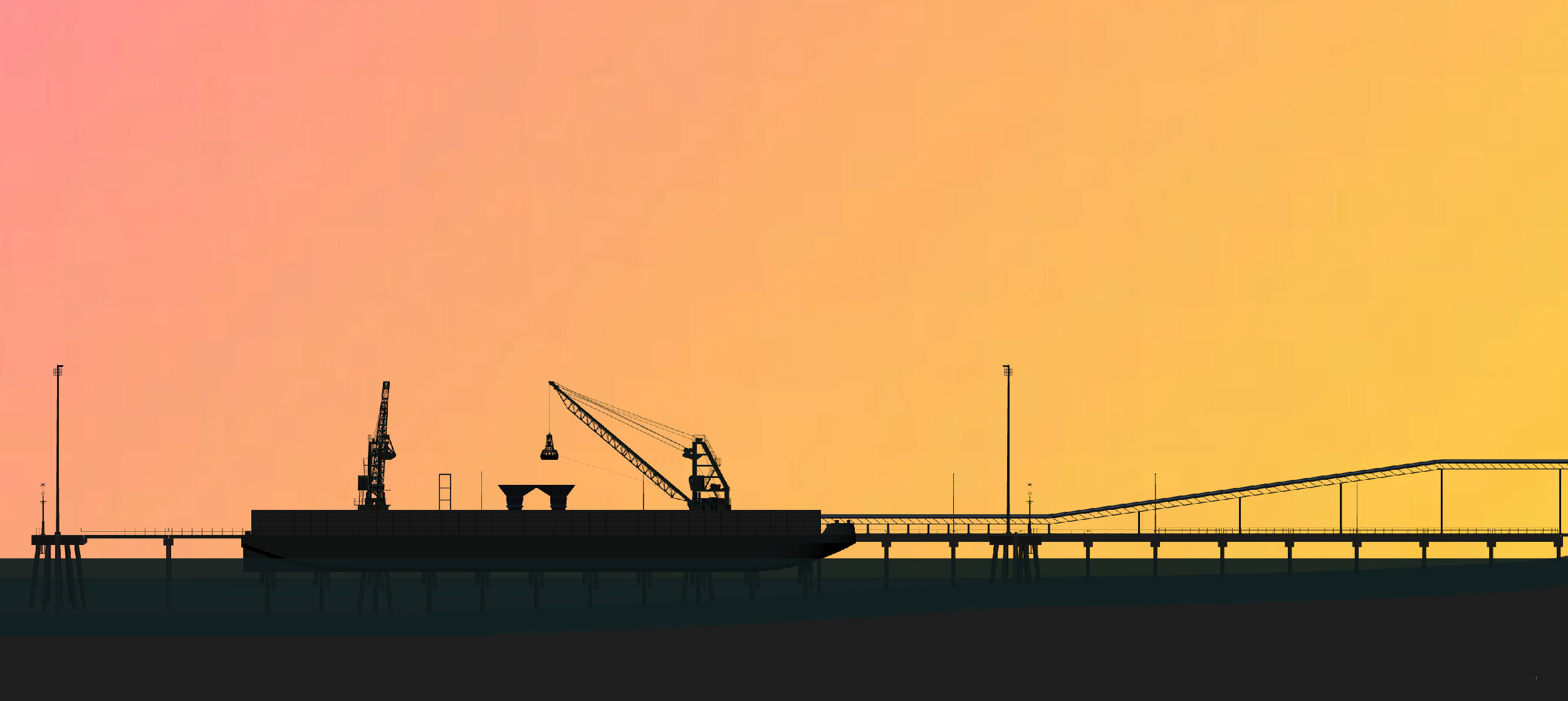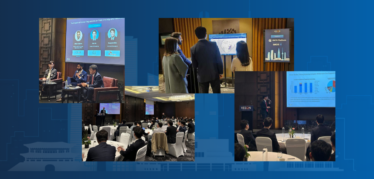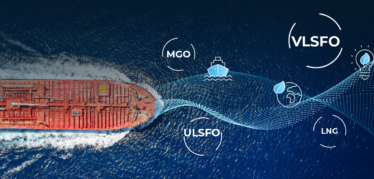The EU ETS is a cornerstone of the EU’s policy combatting climate change, operating in all EU countries, in addition to Iceland, Liechtenstein, and Norway (EEA-EFTA states). It’s a key tool in the cost-effective reduction of greenhouse gas emissions and applies to approximately 40% of greenhouse gas emissions within the EU. The EU ETS, which initially covered sectors like power generation and heavy industry, will extend to the maritime sector starting in 2024. Maritime shipping is no stranger to carbon-related regulation—but the EU ETS for maritime will significantly impact how shipping businesses measure and manage carbon emissions.
If you’ve heard of EU ETS but lack clarity around its structure and intended purpose, here’s a quick overview: The EU ETS for maritime operates using a ‘cap and trade’ system. This is when a cap is set on the total amount of certain greenhouse gases that can be emitted by operators who are covered by the system. Over time, the cap is reduced so that the total emissions fall gradually, giving operators time to adjust. In addition, the EU ETS allows operators to buy or receive a trading allowance within the cap, which they can then trade with one another. The overall goal of this system is to incentivize emission reduction and promote investment in innovative, low-carbon technologies.
While the EU ETS has been a key focal point in the maritime shipping regulatory landscape for several years, and 2024 is just months away, maritime shipping organizations are struggling to understand and manage its complex operational and commercial implications. That’s why we have been gathering with maritime stakeholders and technology providers from across the industry to discuss the EU ETS and its impact in depth.
One of our presenters at ONCOURSE 2023 was Christian Fleischer from EEX, an organization specifically focused on helping maritime operators successfully navigate ever-changing environmental regulations. In his presentation, Christian provided essential information and actionable insights for organizations that are actively preparing for the EU ETS. He stressed the wide-ranging nuances of the EU ETS, saying “there are several ways to access the EU ETS: every situation is different and it’s often a business case to make as there are substantial aspects to consider.” If you’re interested in the full presentation, you can download it here.
In a joint presentation with BIMCO at a recent industry event in Houston, we discussed EU ETS in detail – from tracking who is the responsible entity to understanding the fleet aspect of compliance and the overall commercial implications. Thomas Damsgaard of BIMCO, the world’s largest international shipping association, shared this about the importance of proactively addressing carbon risk: “The price fluctuation of EU Allowances over time is considerable. Therefore, when the voyage occurs, if you are not hedging against it then you are really taking a risk for when you must account for them in April and surrender them in September the following year.” BIMCO is working to help support the industry during this transition through its BIMCO EU ETS clauses, the creation of a template to help with delegating responsibility for EUAs, and more.
Calculating Emissions Expenses & Factoring in Carbon Risk
One of the most unanimous takeaways from our discussions of EU ETS for maritime, both at ONCOURSE and other industry gatherings, is that this particular regulation has an outsized operational impact. Compliance may require significant internal resources and potentially external consulting or advisory services. Furthermore, not all voyages will be subject to the regulation, requiring organizations to understand what percentage of voyage emissions apply. Companies that are proactive in reducing emissions and agile in adapting to the operational implications have the opportunity to gain a competitive advantage. At the same time, those slow to adapt may find themselves unable to keep up with the excess costs associated with operating in the European market.
What separates organizations who adapt rapidly from those who do not? Following are three key requirements to help support your organization in successfully adapting your operations to EU ETS in maritime shipping.
1. Managing and Calculating the Expenses
First, it’s necessary for organizations to account for carbon expenses in a practical and effective way. To do this, they need to be able to accurately measure factors like fuel consumption for any planned voyage, so they can use this data to evaluate emissions within the geographic and time-based EU ETS rules. This means adding carbon projections to your pre-fixture process. In addition, being able to report on carbon expenses in a way that is detailed and scalable for your organization is essential to avoid incurring unexpected costs that could burden profitability.
2. An expanded definition of exposure
Another factor to consider is that the introduction of EU ETS also means the introduction of EU Allowances (EUAs) and EUA Futures into the market. To account for EUAs and EUA Futures, organizations will need to track these instruments alongside physical exposure to achieve a total picture of their risk. They would also need to calculate the cost of purchasing more allowances on the carbon market in the event they exceed those initially allocated to them. This is an expanded definition of exposure, which was historically comprised of freight and fuel risk. You can learn more about managing carbon exposure here.
3. Actualizing and realizing the impacts
Preparing for the actualized emissions results involves planning for a strategy around EUA’s and understanding your organization’s position in the evolving flow of emissions expenses. Knowing how you will handle these instruments both internally and contractually is essential for optimizing your business for the impact of EU ETS.
The Business Impact of Decarbonizing Shipping
Technology has an undeniable role in empowering industry stakeholders to keep up with regulatory complexity. At ONCOURSE, we also brought together members of the technology community to discuss. Yunus Kaya of StormGeo, Thomas Hechmann of Coach Solutions, Jon Lane of RightShip, and Dr. Piyush Raj of AOT, participated in a panel on the implications of evolving carbon regulations. They explored the broader business implications of embracing EU ETS. The following is a summary of the top three.
1. Investment in energy efficient products and processes
The panel highlighted the focus on efficiency gains in two areas: investment in energy-efficient technologies to reduce emissions and, consequently, carbon allowance costs. Examples include upgrading vessels, retrofitting engines, and implementing fuel solutions. The other is a focus on process optimization across operations, computing, and reporting to streamline costs and effectively manage the increased volume of data.
2. Strides towards low and zero carbon fuels
Over time, EU ETS could drive a shift towards cleaner fuels. Jon Lane, Senior Manager of Sustainability at RightShip, highlighted this shift during the panel, saying, “…it’s all about getting those efficiency gains locked in for vessels so that we are prepared for the transition to those alternative low and zero carbon fuels.” Adapting to low-sulfur or alternative fuels like liquefied natural gas (LNG) or hydrogen often requires significant up-front costs as maritime shipping organizations work to adapt their fleets.
3. A mindset shift to support daily changes
As Thomas Hechmann, Growth Director at Coach Solutions said, “One of the biggest industry challenges in terms of decarbonization is not so much technology development but the mindset shift and incentivization that is required to create change at the day-to-day level.” That is because transitioning to more sustainable operations not only requires investment in new infrastructure, technologies, and processes; it requires personnel to be retrained and to adopt a new, carbon-aware mindset in their daily workflows. For example, decarbonization may require rethinking supply chain strategies, including shifts in shipping routes, changes in cargo handling, and adjustments in shipping schedules. Maritime stakeholders are charged with managing this transition effectively in their organizations.
While EU ETS presents the challenge of self-regulation in the industry, it also comes with the potential benefit of uniting on-shore and off-shore teams in pursuit of a common goal. Yunus Kaya, Project & Vessel Performance Manager – StormGeo Fleet Performance Center, StormGeo, elaborated on this shift, saying, “A challenge that I see as… the next step in the industry’s decarbonization is [educating] the crew onboard as to how carbon calculations are actually used by the business. Making this connection between on- and off-shore teams could help streamline sustainability efforts and uncover more insights.”
At Veson, we welcome that challenge and are looking for new and innovative ways to support a wide range of stakeholders across the maritime shipping industry as they navigate the ever-evolving regulatory landscape.
Navigating Change with Veson
There are still unknowns associated with the EU ETS, and the regulatory landscape will continue to change and evolve in the future. The commercial platform a maritime shipping organization chooses is a key determinant in its ability to adapt. A deep dive into the EU ETS’ cap and trade system and its operational and commercial impact on maritime shipping. We offer solutions to help you holistically calculate the emissions expense of a voyage, understand exposure and how to manage risk in the volatile carbon market, and actualize the impact on your final voyage result.
For more information on how we help our clients navigate regulatory complexity, click here. To speak with a member of the Veson team about your regulatory strategy, contact us today.



 Giftson Eliyesar
Giftson Eliyesar
 Hongbeom Park
Hongbeom Park
 Oliver Kirkham
Oliver Kirkham